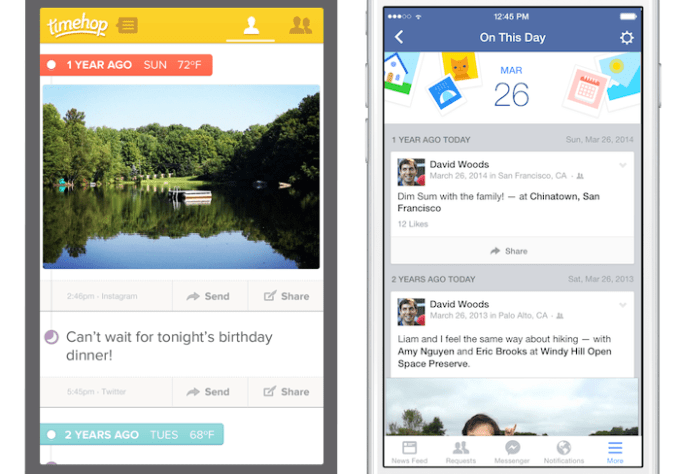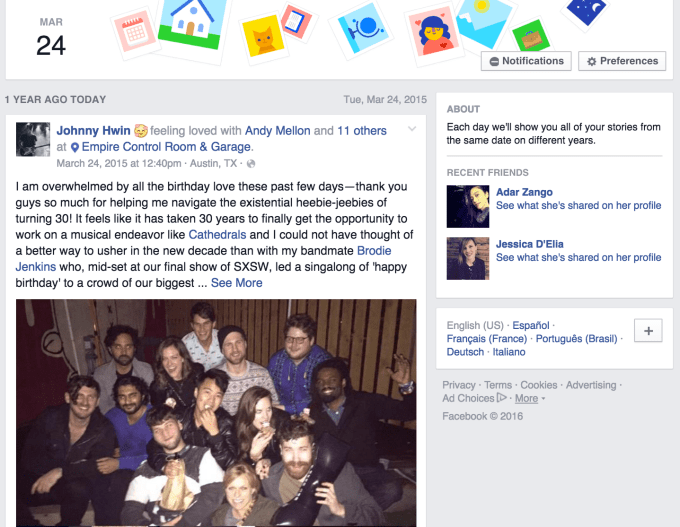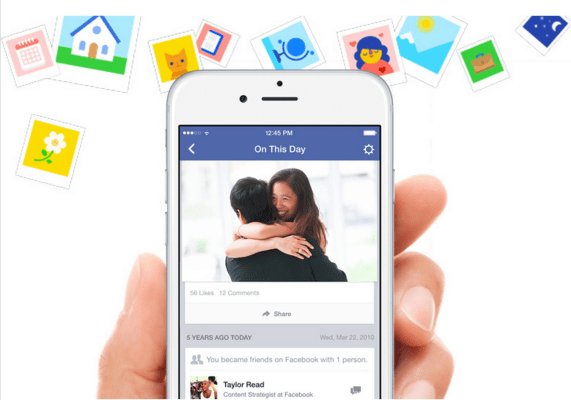A year after blatantly copying Timehop, Facebook’s nostalgia feature is proving how successful big platforms can be when they rip off smaller products. Each day 60 million people visit On This Day, and 155 million have subscribed to its notifications that show your photos, status, updates, and wall posts from this date in years past.
Facebook released the data on the one-year anniversary of the launch of On This Day itself. For reference, Timehop started in 2011 and by the end of 2014, had 12 million registered users and 6 million daily users.

On This Day on the right looks remarkably similar to predecessor Timehop on the left
When On This Day launched, Timehop CEO Jonathan Wegener seemed to downplay the threat, telling me “My general feeling is that this is awesome validation that we’re doing something worth doing. One of our investors put it really nicely that if Facebook isn’t playing in your space, you’re probably not doing something worth doing.” The startup has raised $14.1 million including a $10 million Series B in July 2014 from Shasta Ventures.
But despite Timehop also bringing in posts from Twitter and other platforms, heavy Facebook users might have less of a need for it now that On This Day is available where they already browse. In just a year, Facebook has leveraged its enormous 1.59 billion user base and promotion on its News Feed to reach 5X as many people with On This Day.
Facebook tells me it’s spent the year improving the product to better understand what you want to see and avoid showing anything that could make you sad. It’s now using artificial intelligence to rank the posts you see in On This Day, and is personalizing the feature based on your past use and your demographic. Facebook also engineered in compassion by filtering out memories of people who you’ve blocked or who were ex-romantic partners.

After 12 year online, Facebook has built up a remarkable digital history on many of us. And while Timehop or others might be able to pull posts from the past, Facebook understands exactly who and what you care about, so it can show an old photo of you and your best friend rather than some random acquaintance.
While Timehop is surviving, today’s stats are a glum warning to developers about what can happen when you build something too close to one of the 800-pound gorillas.
